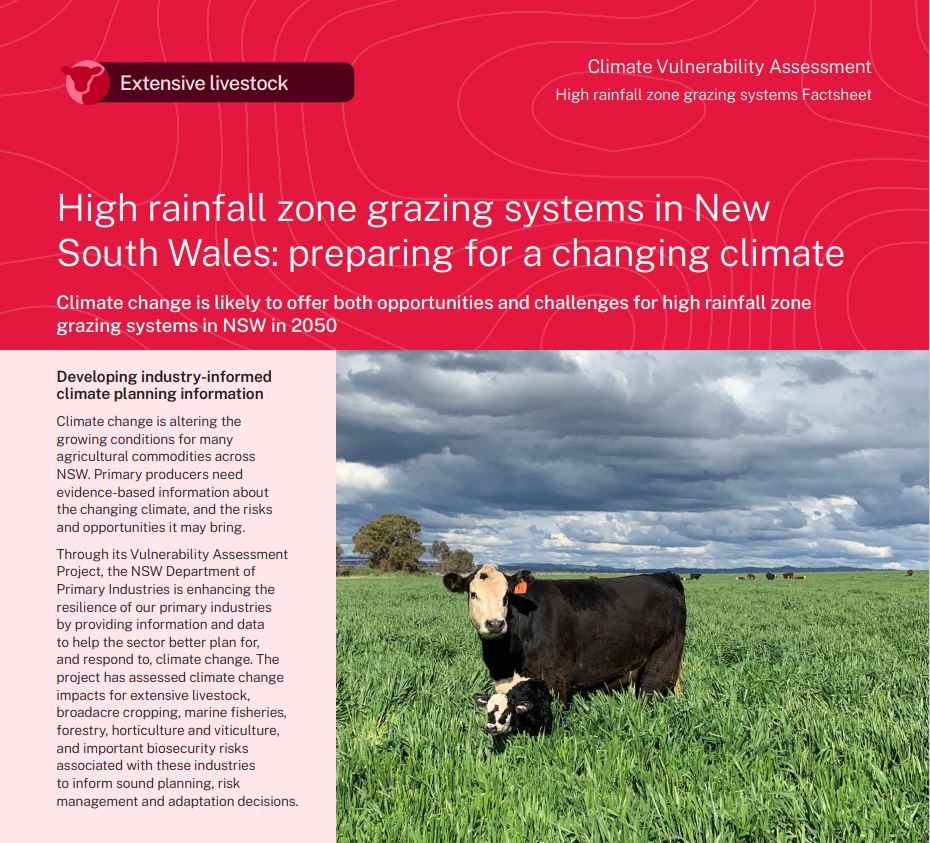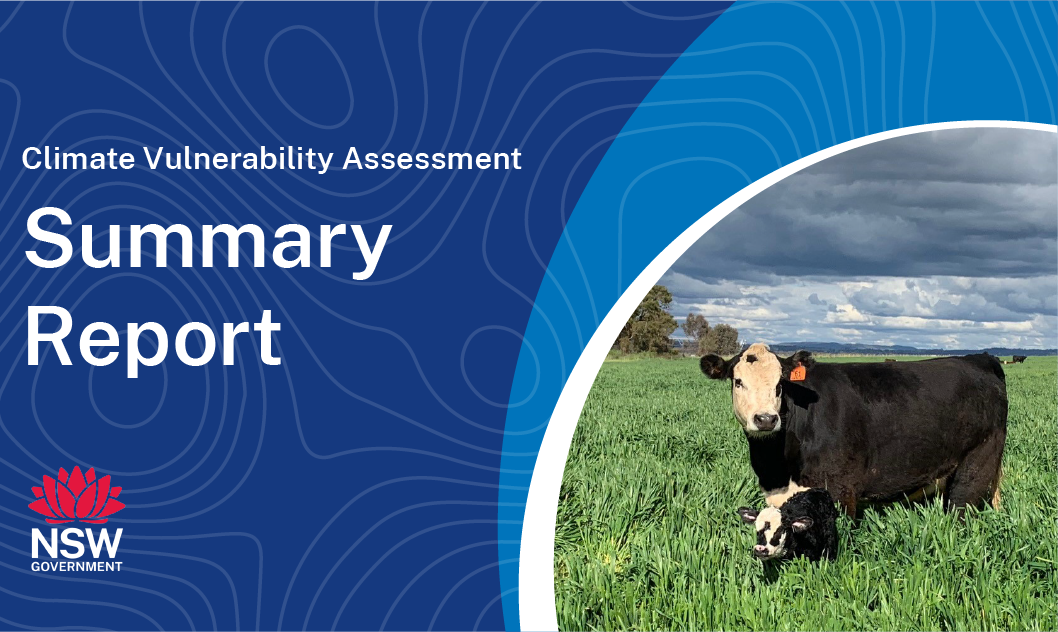What is the NSW DPIRD Climate Vulnerability Assessment? ⏷
Climate change is altering the growing conditions for many agricultural commodities across NSW. Primary producers need evidence-based information about the changing climate, and the risks and opportunities it may bring.
The NSW DPIRD Climate Vulnerability Assessments are enhancing the resilience of our primary industries by providing information and data to help the sector better plan for, and respond to, climate change. They have assessed climate change impacts for extensive livestock, broadacre and irrigated cropping, marine fisheries, forestry, horticulture and viticulture, and important biosecurity risks associated with these industries to inform sound planning, risk management and adaptation decisions.
How we assessed climate suitability ⏷
Climate projections were sourced from Climate Change in Australia’s ‘Application Ready Data’. This dataset is comprised of projections from an ensemble of 8 global climate models, each presenting a plausible future climate. The models differ in their projections, giving rise to uncertainty which is reflected in the confidence statements given in brackets. Care should be taken when interpreting these results.
The Climate Vulnerability Assessment is intended to highlight potential industry- or regional-level changes. Intermediate and high emissions scenarios were used in the assessments (RCP4.5 and RCP8.5), but these are not the only future scenarios possible. The inclusion of climate variables important to the commodities production was based on published research, expert knowledge and data quality and availability.
Learn more in the Climate Vulnerability Assessment Project Framework.
Climate impacts: what to expect
The climate suitability for HRZ pastures is likely to remain high to very high across the HRZ grazing systems region in 2050 under both emissions scenarios.
High rainfall zone grazing systems vulnerabilities
- Sown pastures are likely to experience a minimal to moderate decrease in the ability to meet animal intake requirements during summer and autumn, decreasing from very high to high suitability (high to moderate confidence).
High rainfall zone grazing systems opportunities
- Sown pastures in the HRZ grazing systems region are likely to remain very highly suitable during winter and spring under both emissions scenarios (moderate confidence).
- Native pastures in winter are likely to have a minimal increase in suitability around the Cooma region and is expected to maintain high climate suitability (moderate to high confidence).
Adapting to the changing climate
Adapting to a reduction in feed
- Increasing soil fertility improves the pasture growth response when there is available water, and has been identified as a key adaptation strategy.
- Using tropical pasture species, particularly in the north, may be an appropriate adaptation due to their greater resilience to climate change and increased production under variable rainfall.
- Selecting hard-seeded legumes, which exhibit longer dormancy until suitable rainfall and temperature conditions are met for germination, may increase seed bank resilience.
Where can I find the climate suitability maps?
Maps of historical and future climate suitability for commodities were produced to demonstrate where in the state a commodity is likely to thrive or else be limited by future climatic conditions. The maps are not provided on these webpages but can be found in the Climate Vulnerability Assessment Summary Report (PDF, 41425.92 KB).
High rainfall zone grazing system factsheet
(PDF, 2404.4 KB)

Summary Report
(PDF, 41425.92 KB)

